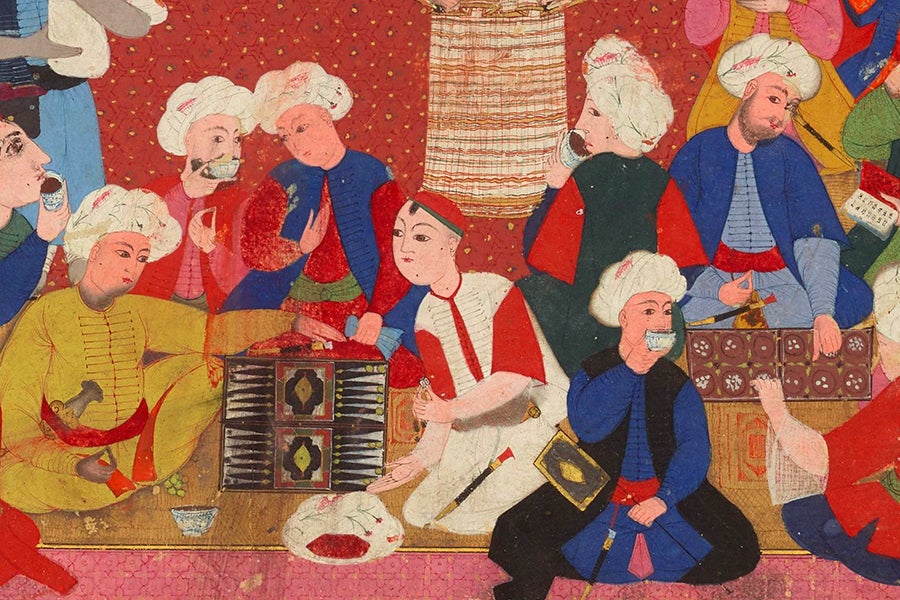Coffee and Coffeehouses in
Ottoman and Safavid Lands, 1500–1800
Farshid Emami
Synopsis:
A plant native to the highlands of Ethiopia, coffee was first consumed as a hot beverage in the Yemen during the fourteenth or fifteenth century. During the sixteenth century, the new drink spread beyond the Arabian Peninsula and coffeehouses proliferated in the eastern Mediterranean region, which was under Ottoman rule. In the seventeenth century coffee was then introduced to Safavid Iran. This presentation explores the architecture of coffeehouses in Ottoman and Safavid lands, with a focus on the cities of Aleppo (Syria), Istanbul (Turkey), and Isfahan (Iran). As novel social establishments, coffeehouses shaped and hosted new form of urban sociability and contributed to the expansion of the public sphere.
References:
Alafandi, Rami. “The Waqf of Ibshir Mustafa Pasha.” L.I.S.A. – The Science Portal of The Gerda Henkel Foundation. ![]()
David, Jean-Claude. Le waqf d’Ipšīr Pāšā à Alep (1063/1653): Étude d’urbanisme historique. Avec la collaboration de Bruno Chauffert-Yvart. Damascus: Presses de l’Ifpo, 1982. ![]()
Emami, Farshid. “Coffeehouses, Urban Spaces, and the Formation of a Public Sphere in Safavid Isfahan.” Muqarnas 33 (2016): 177–220. ![]()
Hattox, Ralph S. Coffee and Coffeehouses: The Origins of a Social Beverage in the Medieval Near East. Seattle: University of Washington Press, 1988. ![]()
Özkoçak, Selma Akyazıcı. “Coffee-houses: Rethinking the Public and Private in Early Modern Istanbul.” Journal of Urban History 33, no. 6 (2007): 965–86. ![]()
Watenpaugh, Heghnar Zeitlian. The Image of an Ottoman City: Imperial Architecture and Urban Experience in Aleppo in the 16th and 17th Centuries. Leiden: Brill, 2004. ![]()
Worksheet:
A worksheet for this video is available here.
Also visit the Khamseen Worksheets page here.
Citation:
Farshid Emami, “Coffee and Coffeehouses in Ottoman and Safavid Lands, 1500-1800,” Khamseen: Islamic Art History Online, published 9 February 2021.

Farshid Emami (Ph.D. Harvard University, 2017) specializes in the history of architecture, urbanism, and the arts in the Islamic lands, with a focus on the early modern period and particularly Safavid Iran. His scholarly interests include global histories of early modernity, interactions of architecture and literature, social histories of the arts, and artistic exchange in the Persianate lands and beyond. His forthcoming book, Isfahan: Architecture and Urban Experience in Early Modern Iran (Penn State University Press, Spring 2024), offers a new narrative of the architecture and urbanism of seventeenth-century Isfahan, the Safavid capital, through the analytical lens of urban experience. Emami’s studies of early modern Isfahan have been published in the Metropolitan Museum Journal (2019), Journal for Early Modern Cultural Studies (2018), and Muqarnas (2016). He has also written on topics such as lithography in nineteenth-century Iran and modernist architecture and urbanism in the Middle East.


